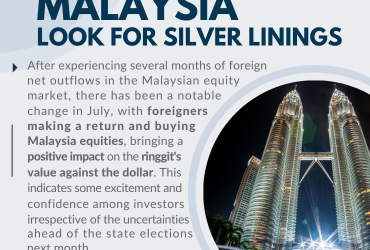
Over the past 13 years, growth stocks have had a favourable environment, which was accelerated by the increased demand for online services, digital entertainment, and technology that facilitated remote work during the pandemic. However, in late 2020, growth’s outperformance of value came to a peak as inflation and rising interest rates entered the picture. Since then, we have seen a resurgence of value investing. In 2023, the equities rally has been led by growth stocks so far, with value equities experiencing a slowdown in their outperformance seen in 2022.
Investors have long debated the merits of value investing versus growth investing. But what‘s the difference between value and growth investing, and is one better than the other?
Value and growth are two different investment styles that investors use to make investment decisions, as we previously discussed. The value investing style focuses on buying a fundamentally strong company at a reasonable/cheap price. As a result, investors look for companies which offer a low price-to-earnings ratio, a low price-to-sales ratio, and a higher dividend yield in general. In contrast, the growth style of investing seeks for companies with high earnings growth rates, high return on equity, high profit margins, and low dividend yields. The idea is that if a company possesses all of these characteristics, it is likely to be an innovator in its field, growing rapidly and reinvesting most or all of its earnings to fuel future growth.
In our view, there is no single best investment style as each approach may be better suited for specific investors depending on their investment objectives, risk tolerance, and time horizon. Value investing could be an ideal choice for investors seeking stable, income-generating stocks over the long term. On the other hand, growth investing may be more appropriate for investors looking for capital appreciation and willing to assume higher risk for the potential of greater returns. Moreover, as pure value and pure growth strategies have certain limitations, many investors are now favouring hybrid strategies that combine the best aspects of both styles. This approach allows investors to benefit from the stability of value investing while also gaining exposure to the potential growth of high-growth companies.
Phillip Managed Account for Retirement (PMART) & Phillip Managed Account (PMA) Blue Chip and Opportunity
Phillip Capital Malaysia offers a wide range of investment portfolios designed to meet your unique investment preferences and financial goals. Our offerings include PMART and PMA Blue Chip and Opportunity portfolios, each tailored to accommodate different investment styles and financial objectives. We also offer both conventional and Shariah-compliant options to cater to the needs of all investors.
As discussed in our previous article, a key difference between Phillip Managed Account for Retirement (PMART) & Phillip Managed Account (PMA) is that PMART is open to all EPF members who have adequate savings in their EPF Account I, to have an alternative for their EPF Savings to be managed by an experienced fund management institution, while PMA is available for cash investors who seek for a customised investment solution that provides capital gain over the long term.
Please click on the link to learn more or email us at cse.my@phillipcapital.com.my if you require any further information.
Disclaimer:
The information contained herein does not constitute an offer, invitation or solicitation to invest in Phillip Capital Management Sdn Bhd (“PCM”). This article has been reviewed and endorsed by the Executive Director (ED) of PCM. This article has not been reviewed by The Securities Commission Malaysia (SC). No part of this document may be circulated or reproduced without prior permission of PCM. This is not a collective investment scheme / unit trust fund. Any investment product or service offered by PCM is not obligations of, deposits in or guaranteed by PCM. Past performance is not necessarily indicative of future returns. Investments are subject to investment risks, including the possible loss of the principal amount invested. Investors should note that the value of the investment may rise as well as decline. If investors are in any doubt about any feature or nature of the investment, they should consult PCM to obtain further information including on the fees and charges involved before investing or seek other professional advice for their specific investment needs or financial situations. Whilst we have taken all reasonable care to ensure that the information contained in this publication is accurate, it does not guarantee the accuracy or completeness of this publication. Any information, opinion and views contained herein are subject to change without notice. We have not given any consideration to and have not made any investigation on your investment objectives, financial situation or your particular needs. Accordingly, no warranty whatsoever is given and no liability whatsoever is accepted for any loss arising whether directly or indirectly as a result of any persons acting on such information and advice.






